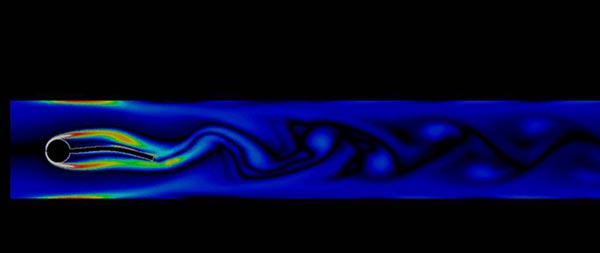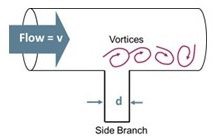Services
- Static Equipment & Structures (Piping Vibration & Fatigue)
- Acoustic Fatigue Assessment for Blowdown Systems
- Acoustic-Induced Vibration (AIV) Analysis
- Finite Element Analysis (FEA) and Computational Fluid Dynamics (CFD)
- Flow-Induced Turbulence (FIT) Analysis
- Flow-Induced Vibration (FIV) Analysis
- Multiphase and Slug Flow Analysis
- Pipe Stress Analysis
- Piping Vibration and Integrity Assessment
- Review & Design Support Services
- Small-Bore Connections (SBC) Assessment
- Structural Vibration and Dynamic Design Analysis
- Subsea Piping Vibration
- Thermal Striping
- Tube Failure Analysis
- Veridian AM
- Veridian VS
- Vibration Inspection Program
- Water Hammer Analysis
- Machinery Analysis
- Bottle Sizing Service
- Compressor Package Engineering
- Finite Element Analysis (FEA) and Computational Fluid Dynamics (CFD)
- Foundation Design and Dynamic Analysis
- Fuel Gas Compressor Piping Transient Analysis
- Lateral Vibration Analysis
- Pipe Stress Analysis
- Pulsation & Mechanical Analysis: Reciprocating Compressor
- Pulsation & Mechanical Analysis: Reciprocating Pump
- Pulsation & Mechanical Analysis: Screw Compressor
- Pump RCF Analysis
- Review & Design Support Services
- Shell Transverse Acoustical (STA) Analysis
- Skid Design and Analysis
- Surge Control Design for Centrifugal Compressor Systems
- Torsional Vibration Analysis (TVA)
- Field Engineering & Troubleshooting
- Finite Element Analysis (FEA) and Computational Fluid Dynamics (CFD)
- Human Vibration
- Motion Amplification Vibration Analysis
- Noise Troubleshooting
- Performance Assessment (Thermodynamic)
- PostPro – field data processing and analysis
- Structural Vibration Troubleshooting
- Thermal Striping
- Troubleshooting, Root Cause Analysis (RCA)
- Veridian iDAC
- Vibration Inspection Program
Flow-Induced Vibration (FIV) Analysis
Design Analysis and Field Troubleshooting
_Analysis_-_banner.jpg)
Flow-induced vibration, or vortex shedding, is due to high flow velocities such as in a piping dead leg of a centrifugal compressor system. This study evaluates vortex shedding and potential vibration across dead leg branches. The study can also include FIV excitation of small-bore piping and components in the flow, such as thermowells.
An FIV study is recommended for new projects involving centrifugal compressors and other high flow gas systems. It can also be part of Wood's Piping Vibration and Integrity Assessment per Energy Institute, 2008, Guidelines for the avoidance of vibration induced fatigue failure in process pipework (AVIFF).
Contents [ hide ]
1 Background
Flow-Induced Vibrations, and the physical parameters which control them, are of significant importance to design engineers and operators. The potential of these phenomena to cause catastrophic failure to piping engineering systems and unacceptably high levels of environmental and occupational noise has motivated significant effort to understand and mitigate these problems.” Source: preface, FIV 2012 Conference, Ireland.
 |
| Figure 1: Example of vortex shedding from an object in the flowstream. Souce: acusim.com |
Flow disturbance (or vortex shedding) is caused by flow past:
- Thermowells or other objects insert in the flow stream (Figure 1), or
- A deadleg branch such as a recycle line or relief line (Figure 2)
At specific frequencies, the flow will excite acoustic resonance, producing high pulsations. These pulsations can excite mechanical resonances, producing high vibration and fatigue failure on the affected piping.
|
Flow creates vortices and excitation.
|
Where: S = Strouhal number |
 |
| Figure 2: Example of "Dead Leg Branch" |
A similar phenomenon happens when you blow air across an open bottle, producing a tonal response.
For high flow gas systems, such as the dead leg shown in Figure 2, high pressure pulsations will be generated when the Vortex Shedding Frequency (VSF) coincides with the Acoustic Natural Frequency (ANF)of the branch. This interaction will cause small-bore piping to vibrate and potentially fail. It is interesting to note that the highest flow rate may not cause the worst vibration.
2 Common Problem Areas
FIV is typically evaluated on centrifugal compressor piping systems. Some risks may also exist with high flow screw compressors. Refer to this page for three examples of FIV problems: Piping Vibration Examples
FIV is also a problem on production risers (offshore), heat exchanger tubes, and many other industrial applications. The figure below illustrates a FIV problem that Wood solved on an exhaust tower.
3 FIV Design Analysis
Wood offers the following FIV design services for piping systems, including centrifugal compressor systems:
- Evaluate the applicable piping location to determine the likelihood of vortex shedding, pulsation and vibration problems. For dead leg branches, Wood evaluates FIV based on geometry, flow regime, and acoustic modes. The methodology described in Energy Institute’s Guidelines for the avoidance of vibration induced fatigue failure in process pipework (AVIFF) is used.
- Optional FIV Service: For thermowells and probes, the calculated vortex shedding frequency is separated from the component’s mechanical natural frequency (MNF).
- Advanced FIV Evaluation: For complex dead leg branches a more detailed FIV study can be done. In certain cases, a forced response of the piping system can be undertaken.
Where there is a risk of fatigue failure, recommendations are provided. For centrifugal compressor piping systems, the FIV Study and Acoustic-Induced Vibration Study (AIV Study) are sometimes both required.
4 FIV Field Troubleshooting Service
Wood’s experienced field team is involved in troubleshooting FIV problems at existing plants. FIV troubleshooting applications include:
- Small-bore piping failures on centrifugal compressors, including thermowells and instrumentation
- Piping shell mode vibration problems
- FIV on heat exchanger tubes
- FIV on piping risers
For field troubleshooting, it is necessary to measure the pulsation, vibration and stress at site, as well as determine the MNF and ANF. In many cases, the field measurements are used in a Finite Element Analysis (FEA) to determine piping stress.
If you are involved in the design or operation of high pressure systems, contact Wood for application support relating to FIV and other vibration issues.
5 Related Information
- Technical paper: AIV and FIV in Pipelines, Plants, and Facilities (PDF)
- Primer - Piping Vibration INtegrity (PDF)
- Piping Vibration Examples
- FIV case study (field troubleshooting on centrifugal compressor) (PDF)
- Energy Institute Guidlines (2008)
6 Related Services
- Piping Vibration and Integrity Assessment (Energy Institute Study, 2008, AVIFF)
- Surge Control Dynamic Analysis (centrifugal compressors)
- Pipe Stress Analysis
- Flow-Induced Turbulence (FIT) Analysis
- Acoustic-Induced Vibration (AIV) Analysis
7 Keywords
- Vortex shedding
- Vortex-induced vibration
- Flow-induced pulsations
- Flow-induced excitations
- Energy Institute Guideline (2008)
- Centrifugal compressor vibration
- Avoidance of vibration induced fatigue failure in process pipework (AVIFF)
- FIV
- Wood Machinery Analysis
More Info
Webinar: Rotating machinery vibration diagnostics • Multi-channel vibration measurements • Webinar: Turning the Screw • Webinar: What is my risk of surge? •
Free webinar
Learn how to select and design vibration control solutions that work – using real-world data and case studies. Register now



